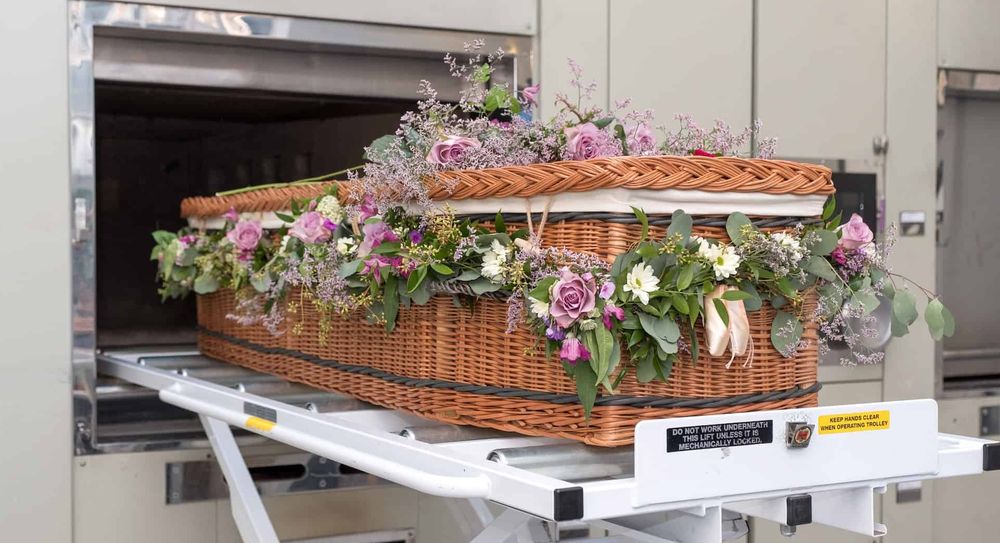If you’re planning a cremation, you might be wondering what to do with the ashes afterwards. Scattering isn’t your only option. If you’d like to keep the ashes in a permanent place you can visit, you might want to consider interring them. But what is interment? Find all the info you need below, from the meaning of interment to planning an interment of ashes service.
What does interment mean?
What is interment? Put simply, it’s when we place someone who’s died in their final resting place. This could be a traditional burial or a natural burial, where a coffin is lowered into the ground. But nowadays, when people talk about interment, they’re often talking about the interment of ashes. There are lots of ways that ashes can be interred. We’ll look at some of your options below.
It’s good to know that the meaning of interment is different to “internment”. It’s easy to mix the two up, because they sound the same and have very similar spellings. Internment (with an “n” in the middle) is when somebody is placed in prison, usually within the military.
Interring ashes: your options
Burying ashes
Choosing burial gives you a permanent place to visit and remember the person who’s died. Whether that’s a marked grave with a gravestone or an unmarked spot. Some places you might want to consider include:
Cemeteries – burying ashes in a cemetery, graveyard or churchyard tends to be the most popular choice. But burying ashes in a cemetery without permission is strictly prohibited. So you’ll need to talk to your chosen cemetery about your options. Usually, you’ll need to sign a burial plot application form and then purchase an exclusive right of burial for the plot you want to use.
Woodland cemeteries - if woodland, meadowland or another natural setting feels right, contact a woodland burial ground. They’ll be able to organise this with you, usually following similar steps to standard cemeteries. You can find a list of woodland burial grounds here.
Private land – if you have a place in mind that’s not a designated burial ground (like private woodland or a park), you can do this with the landowner’s permission. Just be aware that if the land is sold, the new landowner won’t be obligated to let you visit the interred ashes.
If you don’t want a grave marker, or can’t put a grave marker in your chosen location, remember you can use apps like what3words to take a note of the exact spot you chose. You can learn more about burying ashes here.
Interment of ashes in an urn
Some people choose to keep a loved one who’s passed away close. So they choose to keep their cremated remains in a memorial urn at home. There are lots of decorative and keepsake urns you can choose from.
If this is something you’re interested in, take a look at our guide to memorial urns . Or you can ask your chosen funeral director for ideas and advice.
Interment of ashes in a columbarium
A person’s ashes can also be stored in an urn and placed in a columbarium niche. These can be found in cemeteries, crematoriums and mausoleums and give you a physical place to visit your loved one and leave them flowers.
Learn more about this type of interment with our guide: What is a columbarium?
Arranging an interment of ashes service
If you want family or friends to attend the interment of ashes, you could arrange an interment service. This can be whatever you want it to be. It could be anything from a quiet moment of remembrance while the ashes are interred, or a larger celebration where family and friends gather to tell stories of the person who passed.
Some people are now choosing to have a direct cremation (or “unattended cremation”) followed by an interment of ashes ceremony in place of a traditional funeral service.
Whatever you have in mind, talk to your chosen funeral director, who’ll be able to help arrange the ashes interment service. Things you might want to discuss include:
- When and how the ashes will be returned
- Gaining permission to inter the ashes where you want
- Whether you want an urn or box to inter them in
- Whether you want the funeral director to attend the interment
- Inviting guests
- Whether you want a wake after the interment
Alternatives to interment of ashes
If the interment of a loved one’s ashes doesn’t feel right, there are other options that might suit you better. Take a look at some of our guides below for more info.
Photo by Sandy Millar on Unsplash.





